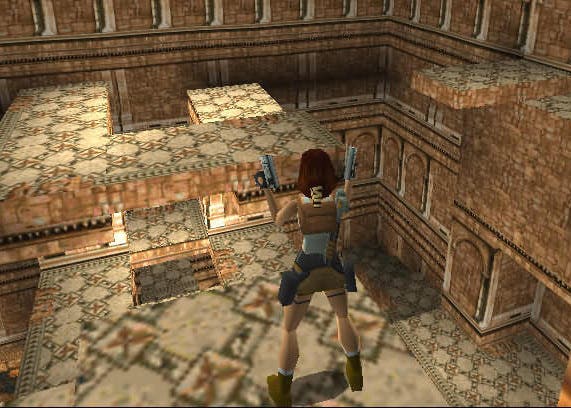Tomb Raider Retrospective
Who's that girl?
Tomb Raider is back on track. Following 2003's berated and broken Angel of Darkness, which saw Eidos relieve Core Design of its duties and ship Ms. Croft over to Crystal Dynamics, the series has made a solid return to form. Tomb Raider Legend was a promising if cautious reinvention, while Anniversary was a glorious update of the original game. This week sees the release of Underworld, the ninth game in the series.
The fact that Underworld is dropping now is sure to resonate with fans of the series as the arrival of a new Lara Croft adventure in November used to be something of a celebrated annual event. Core released five Tomb Raider titles consecutively between 1996 and 2000, with global sales topping 28 million copies. The numbers were huge and the interest in all things Lara was unprecedented. She was splashed on the front of non-gaming magazines and written about in proper newspapers. It seemed that every person in the developed world was playing or talking Tomb Raider.
The original game made its debut on the SEGA Saturn and also appeared on PC, but it was on the PlayStation where the series planted its roots and prospered. As the PlayStation craze took hold, Tomb Raider perhaps did more to bring gaming out of the bedroom that any other title, and that includes Gran Turismo and Metal Gear Solid and any other property that became synonymous with the PlayStation brand. The propagation of Lara Croft as a cyber sex-symbol certainly fuelled Tomb Raider mania, but behind the shrewd character design was a groundbreaking 3D game that deftly mixed action, adventure, puzzle and platform. It had style and substance and it attracted the masses.

It's somewhat ironic then that a game that turned so many people onto gaming is an absolute bitch to play. Going back and playing it now is a sobering experience because controlling Lara is like practising a dark art. Simple tasks such as pulling levers or pushing blocks quickly become full-blown challenges as you try and sidestep into position while wrestling with the wayward camera. Jumping is even worse, asking you to centre both yourself and the camera before leaping into the unknown, as one misplaced step or misjudged angle usually ends in a painful death. If the steps required to perform a perfect running jump are not indelibly burnt into your brain then the sight of Lara, skewered at the bottom of some spiky pit, certainly will be.
The game also relies too heavily on trial and error. Certain scenarios are like throwbacks to Core's earlier Rick Dangerous games where instant and unfair death threatens to turn levels into dull memory tests. And thanks to the widely-spaced checkpoint-saving system, you're required to complete tricky sequences over and over again until you're able to save your hard-earned progress (PC owners, meanwhile, had the benefit of quicksave). In sharp contrast, the combat system was excellent and still manages to impress. Instead of some torturous targeting system, Lara locks onto the nearest threat and holds it in her sights until it's eliminated. And while she's doing this, you can pull off all manner of cool evasive flips and rolls. If only all of Lara's moves were so effortless.

So why did we persevere with the cack-handed controls back then? Well it wasn't to see how the story - involving ancient artefacts and dodgy foreigners - played out, that's for sure. No, we pressed on for no other reason that to experience more of Core's amazing underground world. The early levels in Peru were impressive (T-Rex was a 'wow' moment, of course), but it was Lara's arrival in Greece and particularly St. Francis' Folly the showcased the game's exemplary level design. 'Level' is perhaps the wrong word because these were proper 3D environments, alive with atmosphere and begging to be explored. There were spine-tingling moments, usually triggered by the game's orchestral score, when the ambience was tangible and it felt like you really were deep underground in a dusty tomb, walking in the footsteps of civilisations long gone. It didn't matter that you were controlling a pouting lovely - this was real Boy's Own stuff.
Rumour has it that the guys at Core were so whacked after spending 18 months creating Tomb Raider that the last thing they were considering was a sequel. But after the game hit number one in both the UK and US, Eidos wasn't about to knock on Core's door and demand a sequel to Wonder Dog or Blam Machinehead. It was all about Lara Croft and the hugely anticipated follow-up arrived in November 1997, twelve months on from the original. Due to Eidos's tightening relationship with Sony, Tomb Raider II was only released on PlayStation and PC.

